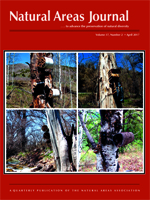Protected areas have been established under the premise of static distribution of different ecosystems and species, but this assumption is becoming invalid due to climate change. Under non-static conditions, some adaptable nonnative species will enter into protected areas, while some native species will no longer be able to sustain ecological functions. In this case, it is a challenge to determine if species that expand their distribution due to climate change (climate-induced species) should be regarded as “alien species” and be removed or not. We approached the challenge of how to treat climate-induced species in protected areas by conducting a literature survey together with a case study in the largest terrestrial national park in Japan (Daisetsuzan National Park). According to both surveys, there is considerable difference in the attitudes of researchers and practitioners. Practitioners tend to think that climate-induced species should be removed only if they are harmful and realistically removable. Continued discussion on climate-induced species is needed to develop and implement a consistent response.
How to translate text using browser tools
1 April 2017
How Can Protected Area Managers Deal with Nonnative Species in an Era of Climate Change?
Takafumi Ohsawa,
Thomas Edward Jones
ACCESS THE FULL ARTICLE

Natural Areas Journal
Vol. 37 • No. 2
April 2017
Vol. 37 • No. 2
April 2017
Adaptation
alien species
climate change
climate-induced species
protected areas




